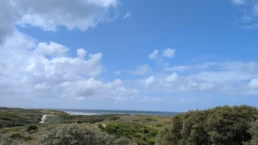Anxious-Preoccupied Attachment and My Experience With It
Discovering Anxious-Preoccupied Attachment and My Experience With It
Growing up, I never thought I was witnessing what’s called “anxious-preoccupied attachment” — a pattern that often shows up as protest or pursuer behaviors. I just felt that my parent wanted the best for me — that they were a bit too pushy, a bit too worried, a bit too anxious that I wouldn’t make it in life. It came from love — genuine love — but it had its consequences.
My approach to life was shaped by this environment. I felt I needed to perform — to outperform — to compete. I had to try to be the first in class, and when I wasn’t — which was often — I felt like my efforts, or even I as a child, weren’t fully appreciated.
Gratitude to my Parents
As I write this, I’m also aware that these experiences are part of my present moment — part of who I am today. And I can cherish this moment. I can feel gratitude for my parents, and for everything that led me here. That gratitude doesn’t stop me from learning about myself, or from releasing what no longer serves me.
A Life Journey
As a teenager, I rebelled against the constant push to perform. Eventually, I realized that if I wanted to reach my own goals, I needed to at least maintain passing grades. The anxious-preoccupied attachment I grew up with showed up as constant connection-seeking — an urge for me to study more, to check if I was reading enough, doing my homework — and a great deal of negative talk, passive aggression, and shame when I fell short.
Over the years, I came to understand that passive aggression and shaming often grow from fear-driven attempts to motivate or keep connection alive. The constant monitoring? That was intolerance of uncertainty — the unknown feeling dangerous. The nagging tone? Hypervigilance that hadn’t found a regulated outlet.
Understanding this shifted my perspective: so much of what felt controlling and emotionally unsafe to me was actually anxiety speaking through their behavior.
With that understanding came a moment of insight: “Yes, of course!” Knowing how my parent lived, I could see their own need for safety, for reassurance, for connection — and for acknowledgment that they, too, mattered. It made sense.
But insight alone didn’t erase the residue those years left in me.
How It Shaped Me
All that externalized anxious attachment turned inward. It showed up as:
Negative self-talk.
A constant need to do the right thing — and perfectly.
Pressure to paddle against the wave, even at the cost of losing relationships.
Anxiety around decisions and the future.
A drive to stay busy, productive, always achieving.
At times, demanding too much from people — colleagues, friends, even loved ones.
How I Deal With It
Mindfulness has become the key to understanding and softening these patterns.
Mindfulness of thoughts, feelings, and body: Not hyper-vigilance, but gentle noticing. Catching when a thought loop or physical tension signals that the pattern is rising.
Checking in: Asking myself, “How am I feeling right now?” Often, the answer is a mirror showing me what’s really going on in the background.
Boundaries with kindness: Setting boundaries softly but firmly — with compassion for others (because they, too, are suffering) and compassion for myself (because I no longer want to suffer from their suffering).
Mindfulness hasn’t erased these patterns overnight, but it has helped me see them clearly, hold them gently, and begin to let them go.
That, for me, is where healing — and freedom — truly begins.
Anxious-preoccupied attachment isn’t a clinical diagnosis — it’s a lens through which many therapists and researchers describe a pattern of relating marked by deep fear of abandonment, reassurance-seeking, and low self-worth. It helped me make sense of my experience.
Enjoy my other reads:
Recover Your Sovereignty: On this link.
Stop Blaming Your Parents: Turning Mindfulness into Self‑Responsibility. On this link.
Living in Peace: How to Find Inner Peace in this World? On this link.
How to Transform Self-Sabotage with Mindfulness and Love? On this link.
Emotional Identity and Pain: Who Are You Without the Struggle? On this link.
External Resources:
Zen & Engaged Buddhism:
Self-Love – The Way to True Love
From “Treat-Yourself” Culture to Realization
For over a decade, I was taught to believe self-love meant self-indulgence. Take that vacation, go on that trip, crave an ice cream—you deserve it after this tough day. Spending a weekend on my favourite video game felt normal. Yet none of it made me happier, lighter, or helped me break down the patterns I kept repeating.
What Media Misses About Self-Love
It turns out this version of self-love was sold to me by mainstream media, social media, articles, and well-meaning people. What truly matters became harder to find. Years ago, I was lucky enough to learn from Thich Nhat Hanh, whose teachings explore the essence of self-love and true love. More recently, I attended a retreat at the European Institute of Applied Buddhism (EIAB) in Germany led by Thầy Pháp An. The theme was Teachings on Love.
Facing Pain: The Essence of True Self-Love
Self-love—both complex and simple—is finding the most painful parts of ourselves and bringing love to them. So I sat with my pain, with the patterns of suffering inside me, and I brought light to them; I gave them attention and offered love. They are part of me—how could I neglect them for years while thinking ice cream was the answer?
Authenticity Through Gentle Self-Honesty
When I start being truly honest about my pain—seeing its intensity and gently bringing love to it—I can show my real self to the world. Without shame. Without blame. From that place of freedom, authenticity becomes possible. I meet the world with vulnerability that feels solid, strong, and loving, rather than weak.
Healing the Inner Child (Thich Nhat Hanh’s Guidance)
Through Thich Nhat Hanh’s teachings I also learned how to heal my inner child. His book Reconciliation: Healing the Inner Child is a step-by-step guide to sit with that child, attend to the pain, and illuminate the darkest places.
Balancing Comfort Treats with Mindful Compassion
It isn’t always easy. Sometimes that ice cream feels easier than mindfulness—and that’s okay. Balancing small treats (my favourite) with compassion toward our deepest wounds keeps us authentically on the path of healing.
Loving from Strength: The Ripple Effect
When we stay on that path, we open to the world with love, joy, and happiness. We love from strength, not need; with intention, not longing. Our love becomes true at its core because it begins with unselfish love toward ourselves—and naturally extends to others.
Enjoy my other reads:
Recover Your Sovereignty: On this link.
Stop Blaming Your Parents: Turning Mindfulness into Self‑Responsibility. On this link.
Living in Peace: How to Find Inner Peace in this World? On this link.
How to Transform Self-Sabotage with Mindfulness and Love? On this link.
Emotional Identity and Pain: Who Are You Without the Struggle? On this link.
External Resources:
Zen & Engaged Buddhism:
Stop Blaming Your Parents: Turning Mindfulness into Self‑Responsibility
Blame Is a Scapegoat
For many years, I wished I had different parents from the ones I was born to. As a child, I imagined what life would be like with other parents—how I would behave, how I would be treated, what they could afford for me. I even pictured a home without arguments or disagreements.
That day‑dreaming followed me into my teenage years, but by then it carried anger and hatred toward both of them, each in different ways. I avoided contact and cocooned myself in a private world: a world of day‑dreams—of them being different people and of an alternate reality for myself—because the one I had felt too painful to fully experience (perhaps that warrants a dedicated post).
As time passed, my feelings evolved. I blamed them for everything: our poverty, the things we couldn’t afford, having to work full‑time to pay for university, even that my siblings had to help with tuition fees. Until about eight years ago, I blamed my parents for every misfortune I encountered, without taking any responsibility whatsoever.
Yet they could only love me.
With the little they had, they provided a home and an education through high school. They tried, with the best of intentions, to raise me, love me, and show me their way of life.
From Blame to Mindfulness
When I began my life‑changing journey of mindfulness, I touched an immense inner space I had never experienced before. That space called me back to my roots—my parents—where everything begins. It invited me to revisit them, rewire my day‑dreams, rescript my experience, and return to the child, teenager, and young adult who held so many feelings, thoughts, and anxieties—and to bring love to each of them.
I was invited to become curious about my lifelong patterns—the behaviors, thoughts, and situations I kept recreating, which carried the same pain and suffering I had known as a child.
These patterns were hindering my happiness.
I was acting out a textbook version of self‑sabotage.
I’m share my experience to say:
-
You are not alone in this.
-
You do not have to do it alone.
From Mindfulness to Responsibility
Mindfulness helped me become aware of my feelings, emotions, thoughts, and patterns—and what I need to do (and still need to do) to find happiness. Yet mindfulness alone is not enough. Other resources have helped me as well: systemic therapy, life coaching, books, and mindfulness practice together.
Use every resource at your disposal to release blame toward your parents and the unhappiness that follows. Owning our experience empowers us to act and tap into the inner wisdom we all possess—if we allow ourselves to listen.
Check out my other blogs and external links:
How to Transform Self-Sabotage with Mindfulness and Love? On this link.
Why We Mend Our Wounds, Not Heal Them (Yet)? On this link.
Is Awareness the Same as Freedom? On this link.
Feeling Overwhelmed by Personal Growth? On this link.
Learn more about healing your inner child On this link.
External Resources:
Zen & Engaged Buddhism:
How to Transform Self-Sabotage with Mindfulness and Love
How Do We Transform Our Self-Sabotage?
We carry an inherent wisdom within us. Deep down, we know what’s best for us. We often know exactly what we must do to achieve what we want in life. Sometimes, we even know the path—and the means to walk it.
Yet somehow, we still don’t take the first step.
So… how do we transform our self-sabotage?
Self-Sabotage Is a Trickster
Let’s be clear: I don’t believe self-sabotage is some external force we can blame for everything—just like some people tend to externalize the ego.
Self-sabotage is part of us.
And unless we shine a light on our behaviors, it remains a shadow—hindering our happiness, freedom, or whatever it is we seek.
It shifts shapes and forms.
It adapts.
Your self-sabotage might look one way at work… another with your parents… and yet another in your relationship.
But at its core, what does self-sabotage need most to transform?
Self-Sabotage Needs Love
Have you ever noticed how most things in life—especially mental health—begin to soften when met with real, unconditional love?
There’s a saying from where I come from:
“Even rocks can cry.”
(Rocks are as alive as we are—but that’s for another day.)
The point is: anything in us that resists our true knowing, anything that works against our all-knowing nature, is a part of us that is lacking love.
Why is it lacking love?
>Because it was never given any.
>it wasn’t accepted or embraced.
>Because we never saw it as fully ours.
But when you bring love—genuine, ultimate, infinite love—to even your darkest corners… they begin to shift.
They soften.
They transform.
Mindfulness Transforms Self-Sabotage
Mindfulness is the key.
Bringing awareness to your behavior—and reflecting on it with compassion—can help you see the ways in which you hold yourself back.
Whether it’s blocking your own joy, delaying liberation, or avoiding completing a simple task…
There’s often something deeper beneath it.
Many past experiences plant the seeds of self-sabotage:
“I’m not good enough.”
“I don’t deserve this.”
“This is too good for me.”
“This is too bad for me.”
Where do those thoughts come from?
And how can you bring love to the moment in your life when they were formed?
Was it the little you?
The child you?
The teenager?
The young adult?
Maybe… the present you?
Mindfulness and self-reflection—when practiced with love and kindness—can reprogram your inner world.
You shift your self-talk.
You rewrite the script.
And with time, you begin to see your life in a brighter, softer light.
I wish you lightness.
I wish you joy.
And I wish you happiness.
Other Reads:
Why We Mend Our Wounds, Not Heal Them (Yet)? On this link.
Is Awareness the Same as Freedom? On this link.
Feeling Overwhelmed by Personal Growth? On this link.
Learn more about healing your inner child On this link.
External Resources:
Zen & Engaged Buddhism:
Check-In in the Here and Now
Mindfulness reflection in times of emotional overwhelm
Hello, dear friend.
It’s been a while.
So let me ask: How are you?
Not the “I’m fine” version.
But how are you—really?
Have you felt your sadness creeping in lately?
Have you numbed it with distractions, filled the silence with noise, scrolled until your breath faded into the background?
Have you smiled for others, while forgetting to smile for yourself?
Have you questioned your worth, your place, your presence?
Have you chased something “better,” again and again, only to find yourself standing in the same spot, holding the same ache?
Have you worn your sadness for years—quietly, like a second skin?
If so, you are not alone.
And if you’ve asked yourself these questions lately, then maybe…
This is your invitation to pause.
To undress the sadness.
To sit in silence.
To meet yourself with the tenderness you’ve given others.
Breathe.
Touch your heart.
And ask again: How am I, really?
Learn more about my offerings on this link.
Learn more about mindfulness on this link.
Learn more about healing your inner child on this link.
External Resources:
Zen & Engaged Buddhism:




